Camera Phone Shoot-Out
Color-display phones are clearly the trend these days. In fact, they're more than just a trend. With some manufacturers, color displays are already standard on new phones being introduced, and it's just now starting to become rare for a manufacturer to announce a new phone without color.
For most purposes, a color display does not need to be of particularly great quality to serve its purpose. It doesn't need to be super-bright to read the menus, and most color wireless Internet sites look pretty good in 256 or 4,096 colors.
But photos are much more demanding. When working with photos, the quality of the display becomes many times more important. You don't have to be an expert to spot the difference between 4,096 and 65,000 colors when looking at a photo, and a poor display can make working with photos a difficult and frustrating experience.
All current color-display phones use LCD technology, and within that there are two main types of LCDs: active and passive. By most measures, active displays (which include TFT and TFD) are much better. These are the kind you find in most laptop and desktop flat-panel computer displays. They are bright, fast, and render colors well.
Passive displays, on the other hand, (including STN,) vary wildly in quality. The worst passive displays are dim, slow to respond/update (images "smear" when they move or change quickly), and produce washed-out, unsaturated color. The best passive displays approach active quality, but there is still usually a noticeable difference. The reason passive displays are still used is that they are generally cheaper and use less power (longer battery life). But advances in display technology are constantly changing the playing field, so it's hard to make absolute statements about any display technology.
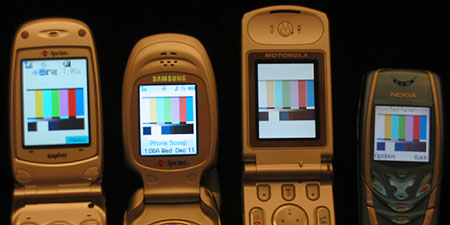
Of the four phones tested for this article, the best display by far was in the Sanyo 5300. Like most active-matrix LCDs, the TFT in the Sanyo is bright and fast. The Sanyo's TFT is especially notable, however, for its huge size, high resolution, high number of colors (65,000), and the accuracy of the colors. It's an absolute pleasure to use. Of course, its huge-ness is part of the reason the Sanyo is also the largest of the four, and the brightness is no doubt part of the reason a 2nd, extended battery is included in the box.
Next-best was a tie, and it might not be the phones you expect... It turns out the age-old saying is true - it's not the size that matters, after all. The Motorola has the next-largest display after the Sanyo, but the Samsung and Nokia had much better displays for viewing photos.
At first glance, the Samsung seems like it should be the better display. The Samsung was by far the brightest of all four, (you can actually use it as a short-range flashlight - seriously,) while the Nokia was the dimmest. The Samsung display is also a good size, while the Nokia was the smallest.
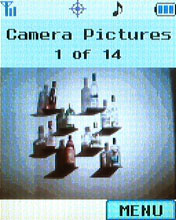
However, the Samsung display had several hits against it. First, for some reason, the limited number of colors (4096) was extremely noticeable. In smooth gradients like walls and skies, there was really terrible-looking banding visible - much worse than the other 4096-color phones. Second, the colors just weren't as saturated as on the Nokia. They appeared slightly washed-out.
The Nokia display, despite its small size and lack of brightness, produced excellent colors, and rendered photos extremely well. The dim-ness wasn't a problem in most environments, and the excellent Nokia interface makes good use of the relatively limited real estate, making it seem larger in practice than it really is. One small hit against the Nokia is that the curved surface of the faceplate meant glare was sometimes more of a problem than with the other phones; perfectly flat surfaces are better for avoiding glare.
Trailing pretty far behind the other phones was the Motorola. The display was dim and colors were washed-out compared to the other phones. A slight brownish tint was also noticeable and bothersome. Wallpaper graphics and menus didn't look too bad, but photos simply looked terrible. It was so bad that quite often it was hard to tell if the image was color at all; photos looked so "dingy" that they looked like sepia-toned (antique) black-and-white images. No detail was visible in the darker areas of the photos, meaning large areas of many photos simply appeared black, (dark brown, actually,) even though the actual captured image wasn't that bad, and displayed acceptably on a computer later.
One downfall of early color LCDs was that, unlike black and white LCDs, they didn't do too well in bright light. This is because black and white LCDs work by reflecting light, (and thus work better when it's brighter,) while most color LCDs work by transmitting light (and thus require a backlight, which can get overpowered by bright light and appear black).
However, recent advances in display technology have led to color LCDs that combine the best of both. Some of these types of LCDs are called "transflective", a cheesy meshing of the words "transmissive" and "reflective". Three of these phones feature displays that are at least semi-reflective, and thus work without a backlight, and in bright light. This picture was taken with all backlights off, and a bright halogen light shining almost in line with the camera (like the sun behind your back).
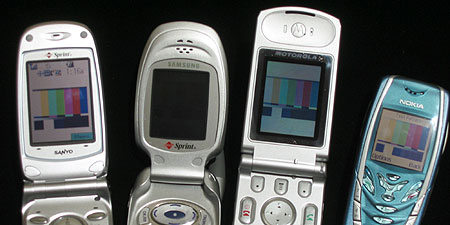
The Samsung display IS on, the back light is just off. I verified this just before and after this picture was taken. If you squint and look at just the right angle, you can just barely make out the test pattern on the display. However, this shouldn't really be held as a hit against the Samsung. Its display is so incredibly bright that the sun rarely overpowers the backlight.
If anything, the Samsung display is almost too bright. In really dark situations, it can strain your eyes to look at it very long. And even in not-so dark situations, less brightness would be fine, and might be nice to save battery life. There is a power-save mode that dims the backlight to half-brightness, but I found that to be too dark in most situations. A brightness adjustment with more options would have been helpful.
Of course, I'd be remiss if I didn't also discuss one of the most exciting display innovations in one of these phones - something that is already a significant trend in Asia: the secondary color display in the Sanyo 5300.
The Sanyo's external color display is decent-sized and square, which is ideal for displaying photos (for photo caller-ID) and wallpaper. Yes, you read that right: wallpaper. Whatever graphic or photo you set for your main-display wallpaper is automatically scaled down and also displayed on the external display when the phone is closed.
The external display is also capable of displaying a whopping 65,000 colors, which again is good for photos. It's passive, but it's a really good passive. In fact, it's so good, I decided to compare it to the other passive MAIN displays:
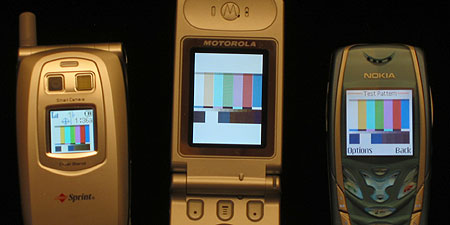
The results were amazing. In my opinion, the quality of the Sanyo's external display was actually slightly better than the Nokia's main display, and much better than the Motorola. I even tried the same backlight-off test as before:
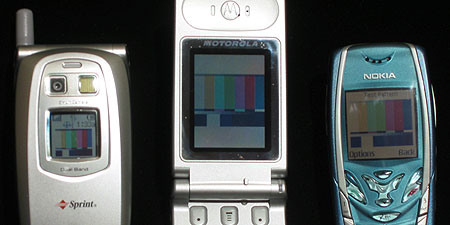
Again, the Sanyo's external display performed amazingly well even with no backlight. The only hit against the Sanyo's external display was the response speed, (due to it being passive,) which actually can be an issue... Read on to find out why!


 iPhone 14 Plus Offers a Big Screen For Less
iPhone 14 Plus Offers a Big Screen For Less
 iPhone 15 Series Goes All-In on USB-C and Dynamic Island
iPhone 15 Series Goes All-In on USB-C and Dynamic Island
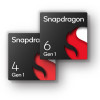 Qualcomm Intros Snapdragon Chips for 2023's Mid-Range & Affordable 5G Phones
Qualcomm Intros Snapdragon Chips for 2023's Mid-Range & Affordable 5G Phones
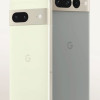 Google Pixel 7 Series Tweaks Size, Adds Pro Cameras
Google Pixel 7 Series Tweaks Size, Adds Pro Cameras
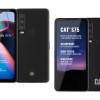 Bullitt Announces First Phones with Satellite Messaging
Bullitt Announces First Phones with Satellite Messaging

